

Fez

Fez
Palais Jamai hotel on the right
Fes or Fez (Arabic فاس [Fās], French Fès) is the third largest city in Morocco, after Casablanca and Rabat, with a population of 946,815 (2004 census). It is the capital of the Fès-Boulemane Region.
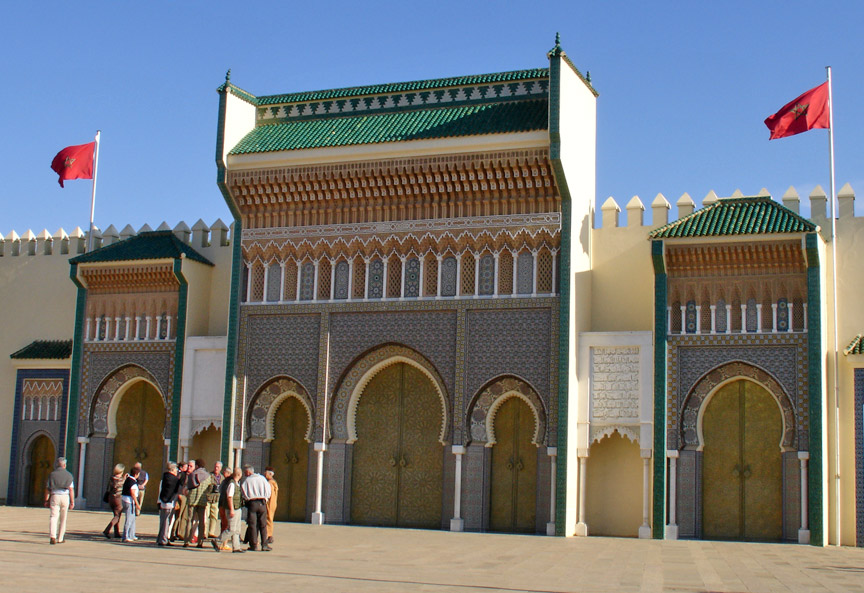
Royal Palace in Fez
More Photos of the Royal Palace
Fes is one of the four so-called "imperial cities" (the others are Marrakech, Meknes and Rabat). It is separated into three parts, Fes el Bali (the old, walled city), Fes-Jdid (new Fes, home of the Mellah), and the Ville Nouvelle (the French-created, newest section of Fes). The Medina of Fes el Bali, the largest of the two medinas of Fes, is believed to be the largest contiguous car-free urban area in the world. Fes el Bali is classified as a UNESCO World Heritage Site.
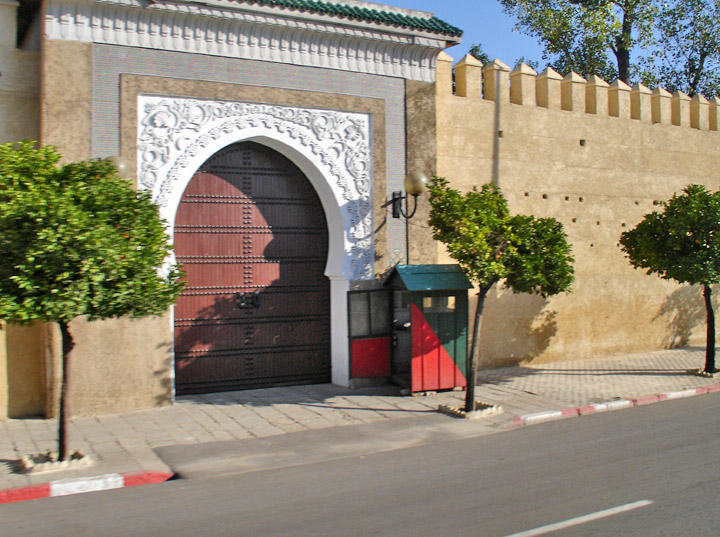
The city was founded on opposite banks of the Fez River by Idris I in 789 and
his son Idris II continued the work in 810. The first was the founder of the
Idrisid dynasty, his son was born after he was assassinated. During Yahya ibn
Muhammad's rule the Kairouyine mosque, one of the oldest and largest in Africa,
was built, and the associated University of Al-Karaouine was founded in 859.[3]
Arab emigration to Fes, mostly from al-Andalus after a rebellion which took
place in Cordoba in 818 and from Tunisia after another rebellion that took place
in 824, gave the city a definite Arab character. 'Adwat al-Andalus and 'Adwat
al-Qarawiyyin, the two main quarters of Fes, were called respectively after the
two waves of Arab immigrants to the new city. After Ali ibn Umar (Ali II) came
to power, the tribes of Madyuna, Gayatha and Miknasa, which were Sufrite
Kharijites, formed a common front against the Idrisid and defeated Ali's armies
and occupied Fes. Yahya ibn Al-Qassim, drove the Sufrites out of the city and
declared himself Ali's successor.

wall of the Medina
The city was populated by Muslims from elsewhere in North Africa, the Middle East, Moriscos, as well as many Jews, who had their own quarter, or Mellah, in the city.
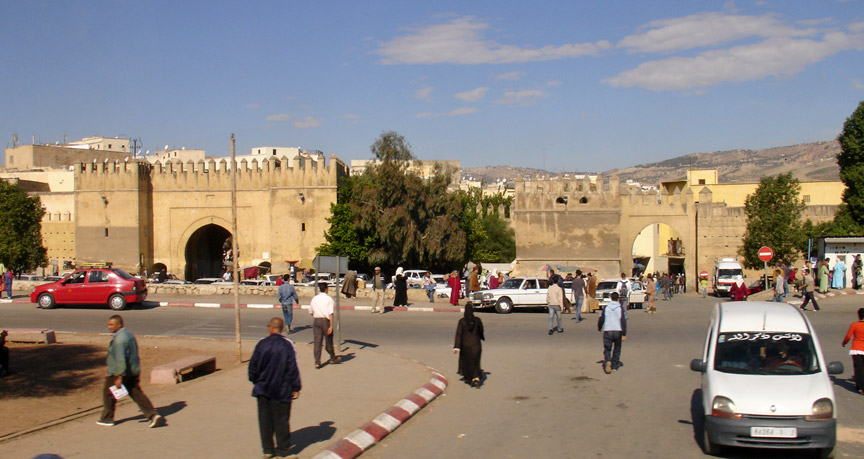
Medina entrances
It is believed that Fes was the largest city in the world from 1170 to 1180. It was the center of the Kingdom of Fez.
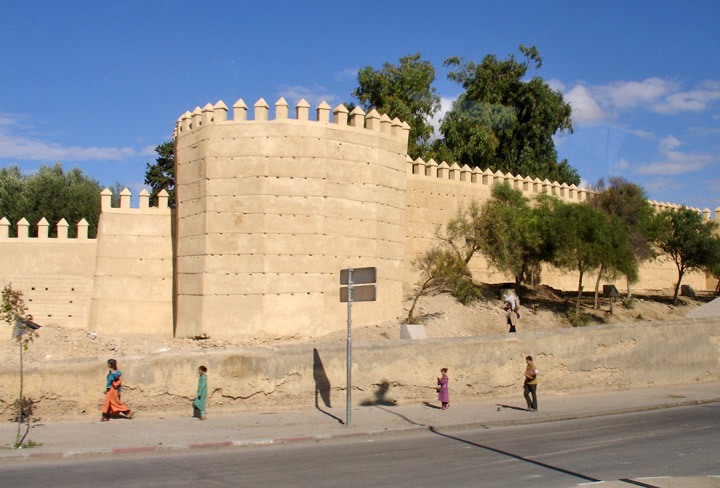
Fes became the scientific and religious center, where both Muslims and
Christians from Europe came to study. Many Muslim refugees came to Fes after the
reconquest of Spain in 1492.
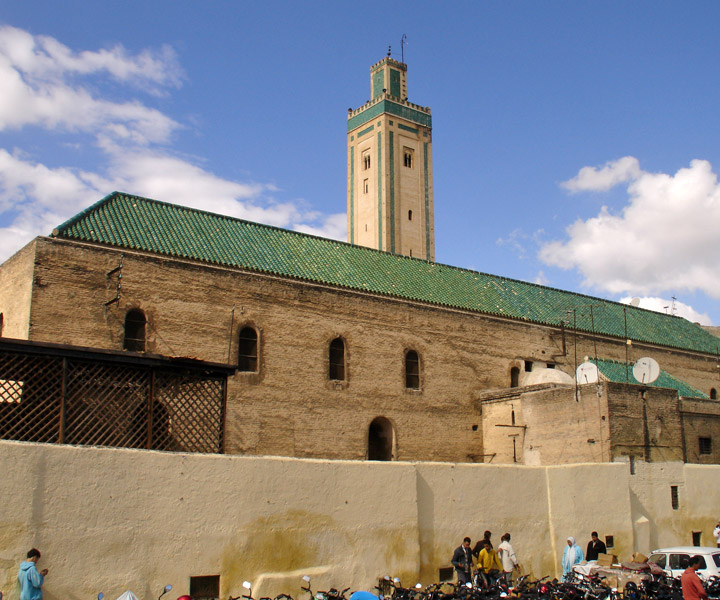
Fes became the center of the Alaouite Dynasty in 1649, and it was a major trading post of the Barbary Coast of North Africa. Until the 19th century it was the only source of Fez hats (also known as the tarboosh), before they began to be manufactured in France and Turkey; originally, the dye for the hats came from a berry that was grown outside the city, known as the Turkish kizziljiek or Greek akenia (Cornus mascula). Fes was also the end of a north-south gold trading route from Timbuktu.

Fez was a prime manufacturing location for leather goods such as the Adarga.
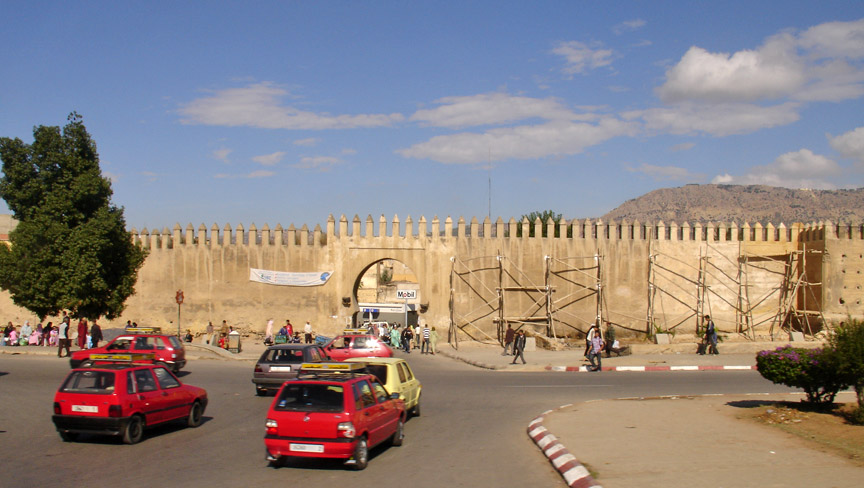
Fes was the capital of Morocco at various times in the past, the last such
period ending in 1912, when most of Morocco came under French control and Rabat
was chosen to be the capital of the new colony, a distinction that city retained
when Morocco achieved independence in 1956. While many of the original
inhabitants of Fes have since emigrated, the Jewish quarter has been emptied of
its Jewish population ( In 1465, there was large massacre of Jews by Arab riots.
[7]), and the economy has stagnated, Fes is perhaps the most interesting and
picturesque of the Imperial Cities of Morocco. Despite the traditional character
of most of the city, there is also a modern section, the Ville Nouvelle, or "New
City", which is a bustling commercial center. The popularity of the city has
increased since the King of Morocco took a Fassi computer engineer, Salma
Bennani, as his wife.
Text from Wikipedia
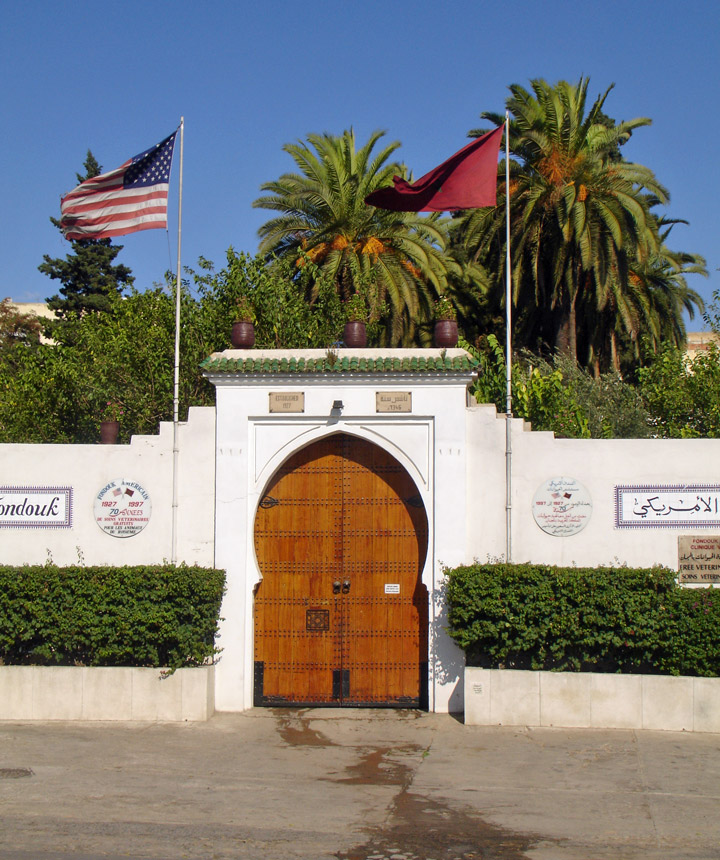
American presence
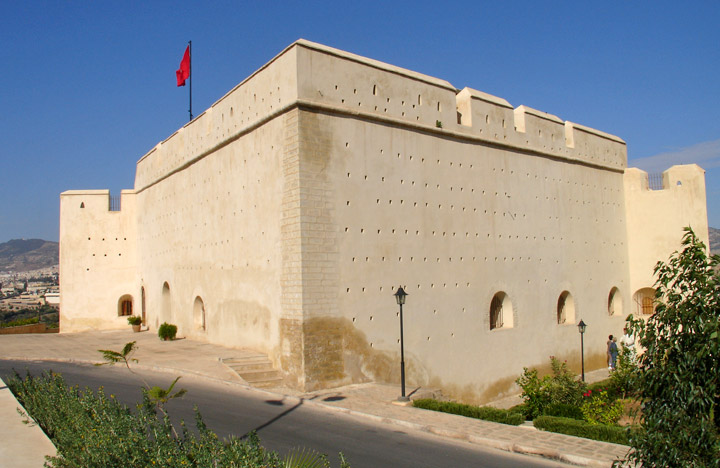
fort on the hill overlooking Fez
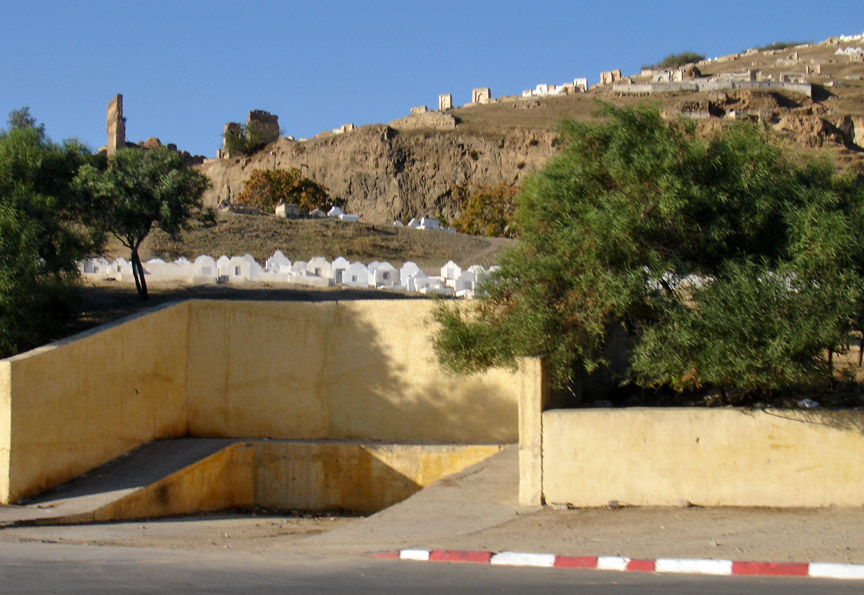
cemetery

preparing the wool for the donkeys to bring into the Medina
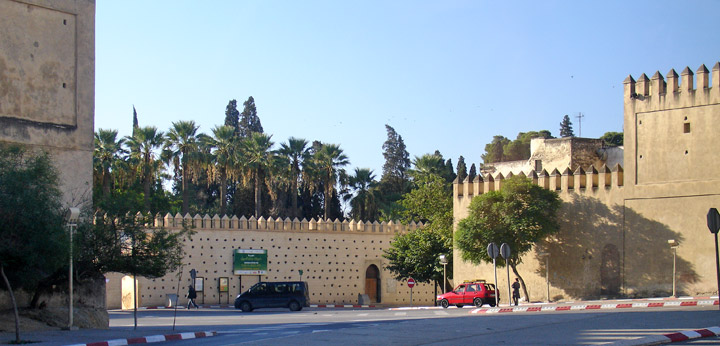
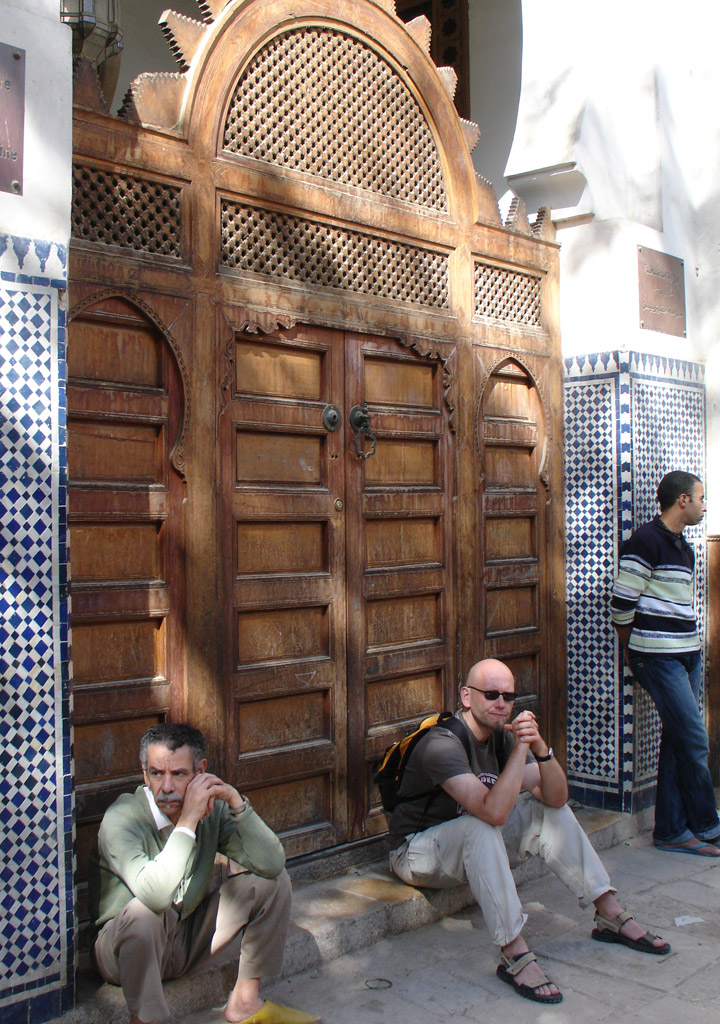
Qaraouiyine Library

More Photos of the Qaraouiyine Mosque
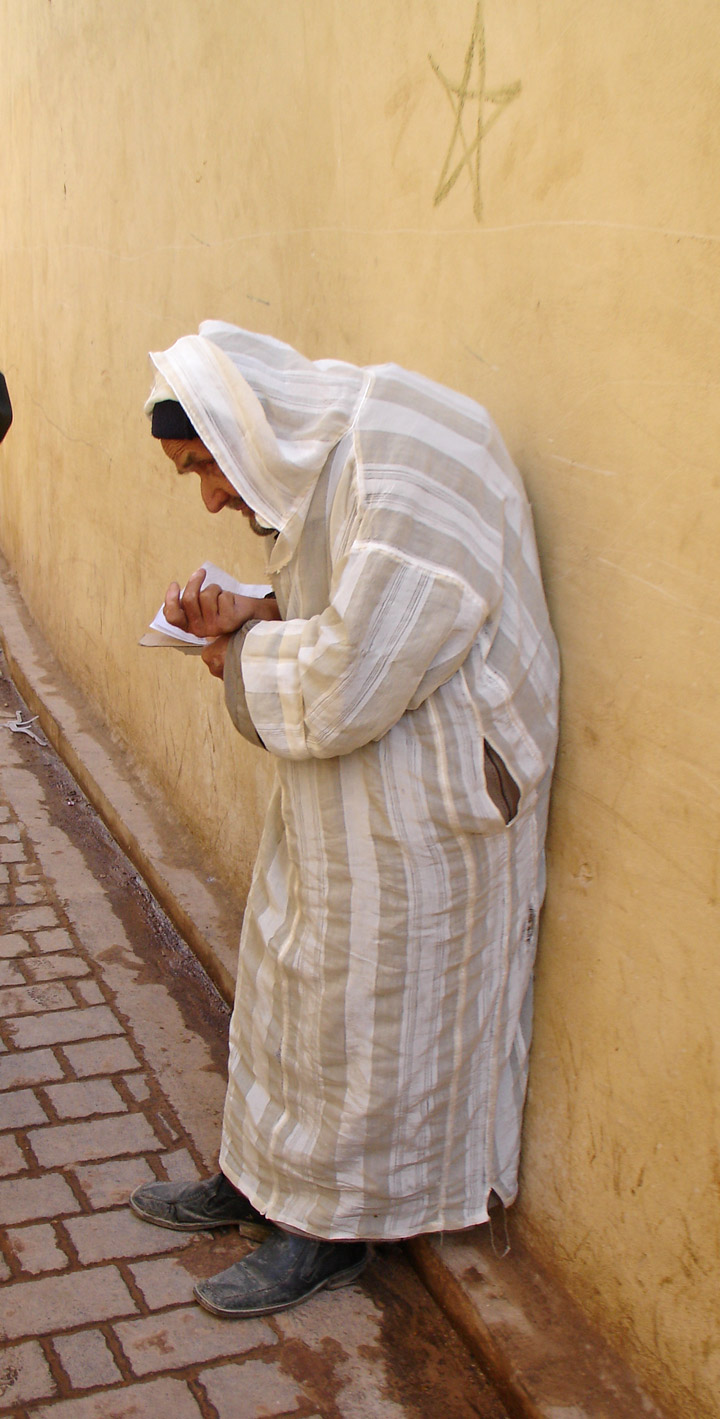
More Photos of the People of Fezez
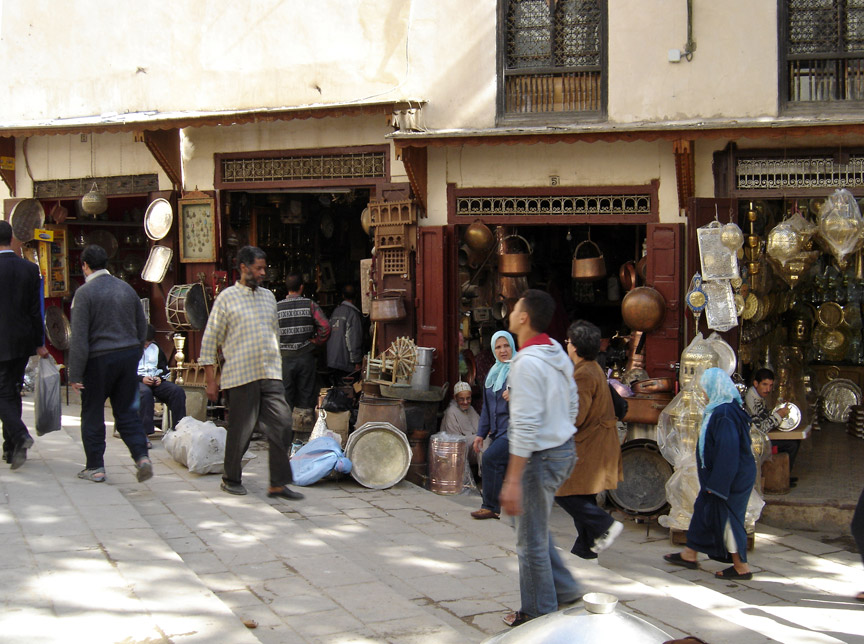
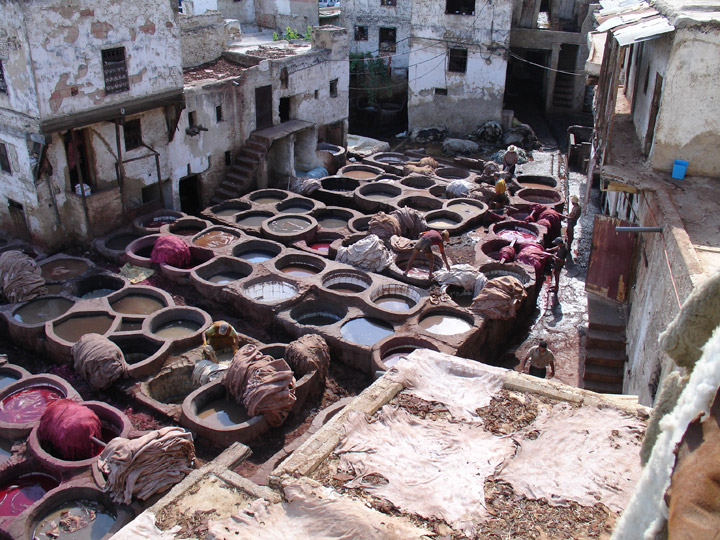
Tannery in Fez